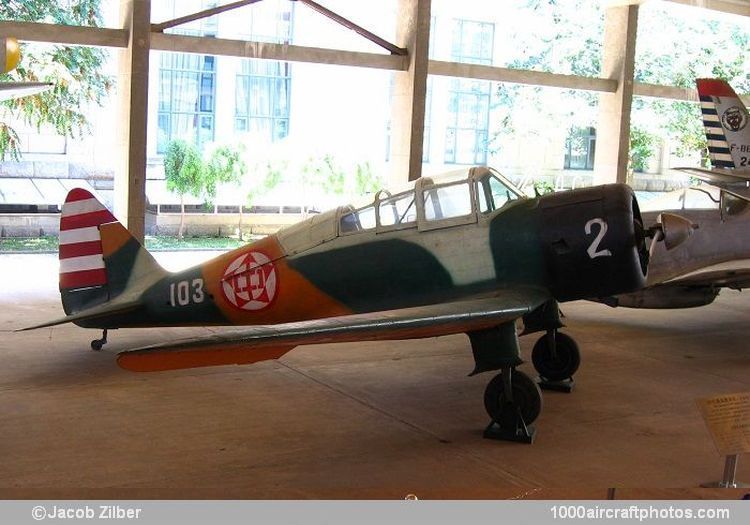02/28/2016. Remarks by Johan Visschedijk: "In May 1937 the Koku Hombu (Aviation Bureau) of the Japanese Army issued a specification calling for a two-seat army co-operation machine. The aircraft was to be a fast single-engined monoplane capable of operating from small rough strips immediately behind the front lines. Good downward visibility from the cockpit and extreme maneuverability at low altitudes were among the prime requirements for the aircraft, which was to incorporate provision for photographic and radio equipment in addition to bomb racks for light anti-personnel bombs.
Competitive designs to this specification were submitted by Mitsubishi (Ki-35) and Tachikawa (Ki-36), but only the construction of Tachikawa Ki-36 prototypes was authorized by the Koku Hombu. Despite the stringent demands for good cockpit visibility, maneuverability and short-field performance, Ryokichi Endo, who led the Tachikawa engineering team, selected a conventional low-wing monoplane configuration with fixed spatted landing gear. To obtain the necessary low speed handling characteristics Endo strove to design a light airframe which, combined with a large wing area, resulted in a low wing loading. Sensitivity of controls was achieved by using large-size elevators and rudder. Despite the cockpit location over the wings, the pilot had a good field of view forward and downward due to the large degree of sweepback incorporated in the wing leading edges, while large windows under the wing center section provided a good field of view for the observer.
Powered by a 450 hp Hitachi Ha-13 nine-cylinder air-cooled radial driving a two-blade wooden propeller, the first prototype was completed in March 1938 and made its maiden flight at Tachikawa on April 20, 1938. During flight tests the aircraft performed satisfactorily and demonstrated brisk take off and flight performance. Because the first Ki-36 suffered from wing tip stall, the second prototype had fixed leading edge slots near the wing tips to correct this deficiency. Both prototypes were armed with a fixed forward-firing 0.303 in (7.7 mm) Type 89 machine gun mounted offset to starboard within the engine cowling and with a similar flexible rear-firing machine gun manned by the observer, and racks were mounted under the wings for ten 27.5 lb (12.5 kg) or 33 lb (15 kg) anti-personnel bombs.
In this form the aircraft was ordered into production as the Army Type 98 Direct Co-operation Plane, beginning at Tachikawa in November 1938, and in 1940 production was also initiated by Kawasaki. Late production aircraft built by Tachikawa and Kawasaki featured a 2° wing wash-out to improve stall characteristics.
Assigned in small detachments to ground units of the Japanese Army, the Ki-36s operated successfully during the second Sino-Japanese conflict. The ability of the aircraft to utilize small airstrips close to the battlefields made it popular with ground commanders, and the Ki-36 contributed significantly to the demoralization of the hard-pressed Chinese troops. However, when the Pacific War began, the Ki-36s suffered heavy losses when faced by Allied fighters and, from 1943 onwards, the aircraft was relegated to units operating in China where they encountered fewer Allied aircraft, after WW II surviving aircraft were operated by the Chinese AF. A small number of Ki-36s were supplied to Thailand.
The ease of piloting and good handling characteristics of the Ki-36 combined with good performance rendered it ideally suited for adaptation to the advanced training role. All unnecessary equipment was removed to conserve weight, as were the observation windows under the fuselage. Designated Ki-55, the trainer was adopted as the Army Type 99 Advanced Trainer and was manufactured in large numbers by Tachikawa and Kawasaki. In the normal flight training syllabus, Army single-engined pilots received their wings after flying the Ki-55 solo, and the aircraft was operated by civil flying schools operating under military contracts as well as by regular Army Flying Schools. Ki-55s were also delivered to the wartime Japanese satellite air forces of Thailand, Manchukuo and Cochin China, while three aircraft of this type abandoned on Java by the Japanese were flown against the Dutch by the revolutionary Indonesian Air Force.
During the last year of the war a number of Ki-36s and Ki-55s, both types being known as IDA to the Allied forces, were expended in suicide sorties for which they carried externally a single 551 lb (250 kg) or 1,102 lb (500 kg) bomb.
An advanced version of the Ki-36 featuring a retractable landing gear and powered by a 600 hp Hitachi Ha-38 nine-cylinder radial driving a three-blade propeller was designed by Tachikawa under the Ki-72 designation but was not built."
